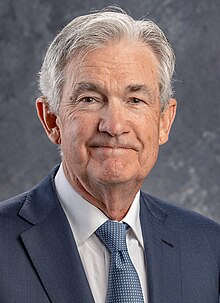The Federal Reserve has finally “said the quiet part out loud”: stagflation is no longer just a tail risk—it’s now a clear and present danger. For months, policymakers danced around the threat. Now, the masks are off.
This is the analysis of Nigel Green, CEO of financial advisory giant deVere Group after the Fed signaled on Wednesday that it expects slower economic growth, higher inflation, and worsening unemployment.
These three factors together point to a rare and punishing economic condition: stagflation, and this time, the central bank directly pointed the finger at trade policy—specifically, President Donald Trump’s aggressive tariffs.
“The Fed has just confirmed what we’ve been warning clients about for more than three months,” said Nigel Green, CEO of deVere Group.
“When you weigh rising prices against declining productivity, and then throw in trade wars, the result is a stagnating economy with no good choices. That’s the definition of stagflation—and now the Fed is saying it, too.”
When the Federal Open Market Committee met in March, it had already downgraded the growth outlook and revised its inflation expectations upward. Back then, Chair Jerome Powell suggested tariffs were partly to blame.
But now, following April’s tariff board stunt from President Trump—which stunned even seasoned market bears—the central bank has shifted gears.
This week, Powell made no attempt to soften the blow.
He told reporters that the tariffs “are likely” to drive inflation higher while choking off growth and raising unemployment—textbook stagflationary outcomes. His change in tone has jolted global investors.
“The Fed’s honesty is late, but welcome,” says Nigel Green.
“Investors can’t wait around for policy clarity from Washington. The time to hedge, reposition, and diversify was yesterday—but the next best time is now.”
While Trump temporarily shelved the latest wave of levies, the Fed appears to be bracing for their return at any moment. Trump’s track record suggests unpredictability is part of the playbook, and the market is pricing in that risk.
This is a sharp reversal from earlier in the year, when optimism over monetary policy shifts led many to believe the worst was behind us.
But inflation has proved sticky. Core PCE, the Fed’s preferred gauge, remains stubbornly above target. Meanwhile, job market momentum is faltering—wage growth is flatlining and new claims for unemployment insurance are rising. Supply chains are being squeezed by new tariff threats, and consumer sentiment is starting to erode.
“In this environment, traditional 60/40 portfolios are insufficient. Investors need greater exposure to inflation-resistant assets like certain commodities, real assets, and defensive equities,” said Nigel Green.
“And with the dollar vulnerable to policy whiplash and trade disruptions, international diversification is absolutely essential.”
The shift in Fed tone also sets up a dilemma: lower rates could fuel inflation further, but holding rates high risks a deeper slowdown. Markets can’t assume a soft landing anymore. Volatility is not a bug of the current environment—it’s a feature.
Investors prepare portfolios for a world where growth is sluggish, inflation persists, and politics distorts macro fundamentals. It’s a stagflationary setup, and ignoring it could prove costly.
“Investors shouldn’t rely on central banks to smooth the ride,” says Nigel Green.
“The Fed is finally calling stagflation by its name. That should be a wake-up call. You can’t wait for stability—you have to build it into your investment strategy because there are plenty of legitimate opportunities.”
He concludes: “As the Fed catches up to reality, smart investors are already adjusting for it.”








